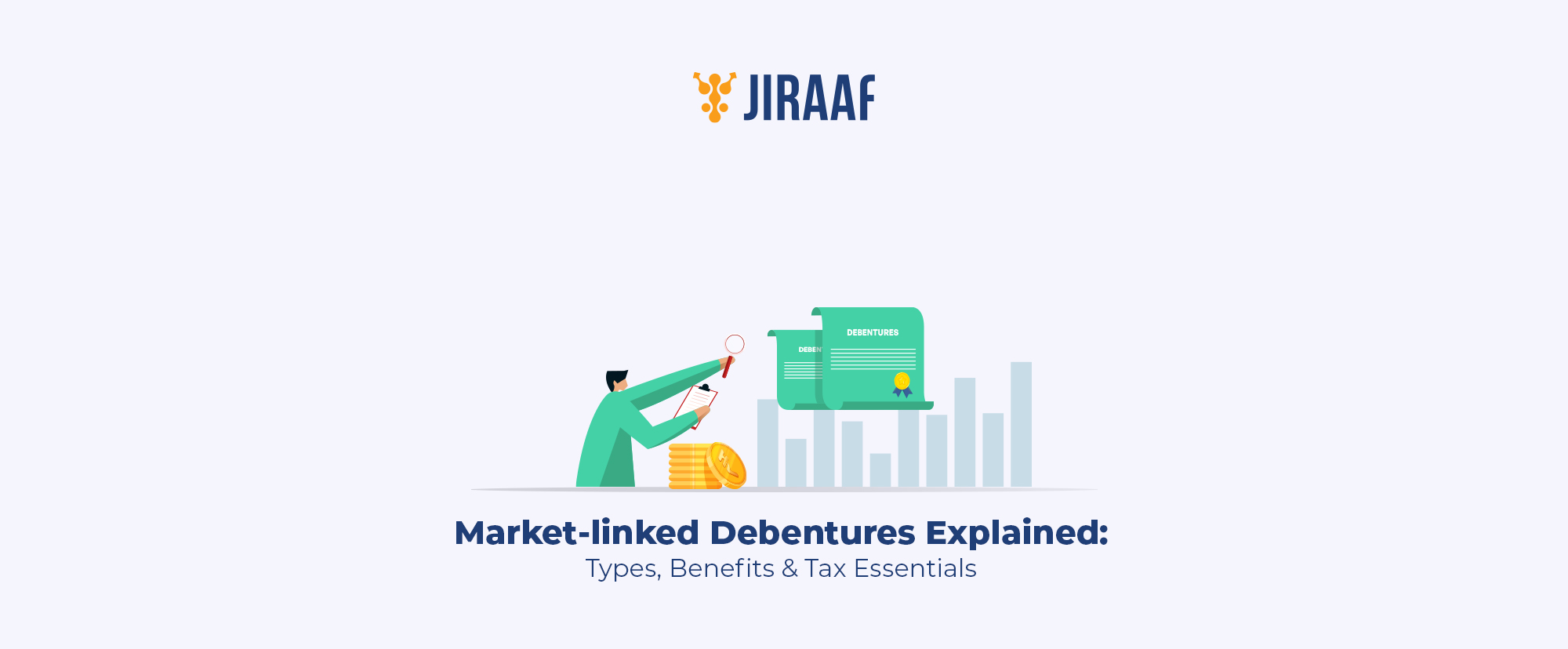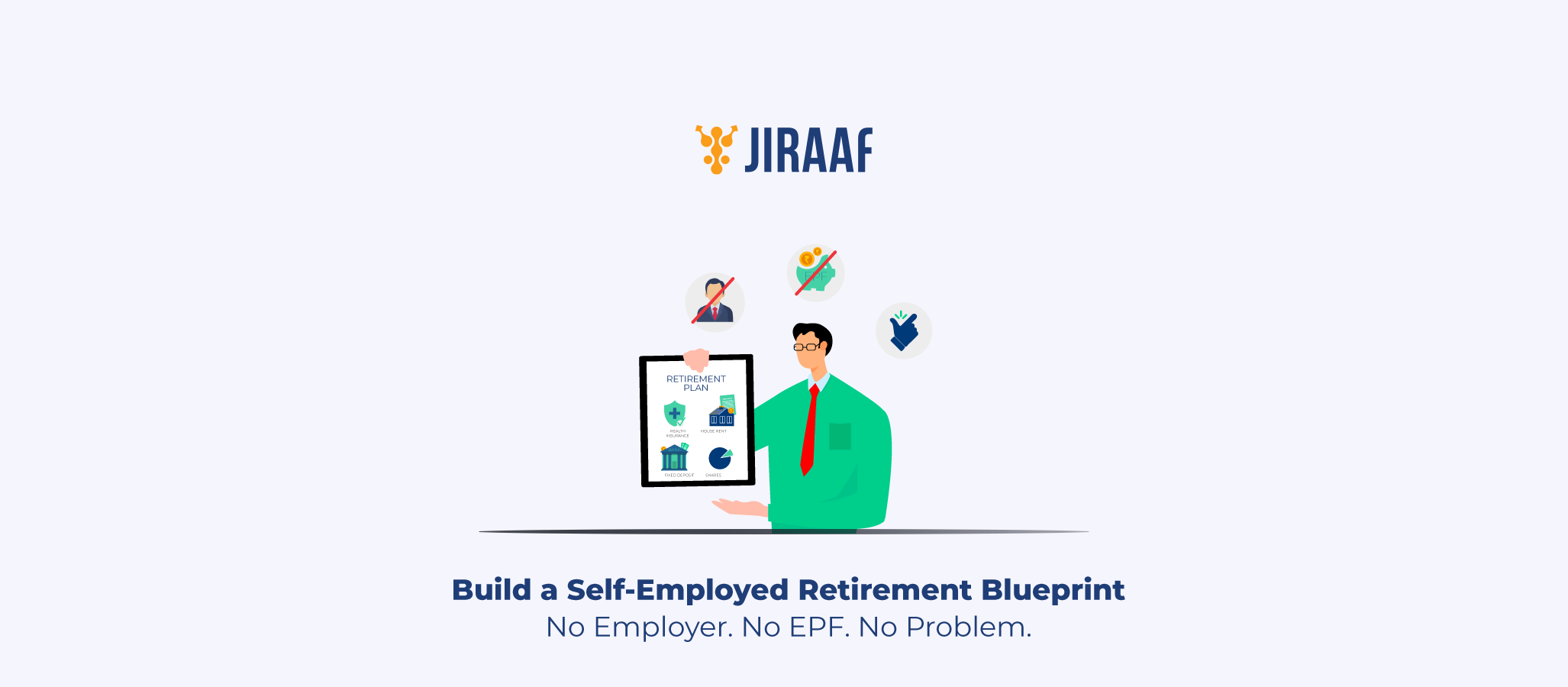What are Market-linked Debentures (MLDs)?
Market Linked Debentures (MLDs) are a hybrid debenture product whose returns are not fixed and are linked to an underlying market index. The underlying index could be equity indexes like NIFTY, SENSEX, or it could be based on government yields, gold etc. MLDs are known for their tax efficiency.
These instruments offer capital protection while their returns depend on how the underlying benchmark/asset performs.
We will give a simple example to explain how it works. Before that, it’s important to understand why having structured products in your portfolio is necessary.
Types of Market Linked Debentures
Market-linked debentures are of two types:
Principal Protected MLDs
Principal protected MLDs ensure that the investor receives the principal amount irrespective of the performance of the benchmark index like NSE. This protects the principal from the volatility of the market.
Non-principal Protected MLDs
In case of non-principal MLDs, the principal may not even be returned if the underlying assets don’t perform well. However, non-principal MLDs can only be issued by companies complying with SEBI regulations.
How Market-linked Debentures (MLDs) Work?
The components of an market-linked debenture include debenture and the underlying asset/benchmark.
And the returns depend on how the underlying asset/benchmark behaves. When we say ‘behaves’, we are referring to the absolute change or the rate of change in a predetermined period.
Another important thing to note here is that, unlike regular debentures, these do not offer regular coupon payments. The return, or ‘premium’, would be paid at the end of maturity.
Let’s look at an example of an MLD with gold prices as the underlying benchmark.
The conditions to determine the returns could be something like this:
If the price of gold falls to Rs. 20,000 or lower, the return on MLD would be nil.
If the price of gold remains above Rs. 20,000, the return on MLD would be 10%.
The general practice in the capital market is that the MLD is sold off in a secondary market just before maturity.
Benefits of Market-linked Debentures
- MLDs are a good asset to include in the portfolio to ensure diversification of risks. MLDs offer higher returns than FDs. It offers benchmark-linked returns that are predictable and ensures protection from market volatility.
Though these instruments are market-linked, the conditions on the underlying assets are created in such a way that the probability of these events occurring is very less.
- Unlike equity, even if the markets don’t perform well, in case of market-linked debentures, you get back the principal amount in case of principal-protected MLDs, thus avoiding capital erosion.
- Market-linked debentures (MLDs) are popular for the tax benefits they offer. Since the returns are paid as accumulative premiums, they would be taxed as capital gains at 10% if held for more than a year. The net effective tax rate for an LTCG flat taxation rate could be a maximum of only 14.25%.
Risks associated with MLDs
Apart from the associated market-linked fluctuation, here are some of the other risks associated with MLDs.
Credit Risk
This refers to the possibility of the issuer defaulting, resulting in a loss of payments. It’s recommended that investors carefully consider the credit ratings of Market-linked Debentures (MLDs) before investing in it just like with most other assets. Credit ratings of AAA is the most sought after followed by AA+, AA, AA- etc.
Liquidity Risk
Market-linked debentures come with a limited liquidity as the payoff happens at maturity and existing before that could mean selling at a discount or inability to find a buyer. Therefore, it’s advisable to buy MLDs only if the investment horizon is long.
Difference between MLDs (Market Linked Debentures) and NCDs (Non-Convertible Debentures)
- Non-Convertible Debentures (NCDs) come with payouts that are periodic in nature including monthly, quarterly, semi-annually or annual. MLDs on the other hand offer a singular payout at maturity
- When it comes to taxation, the interest payment at regular intervals are taxed as per your tax slab, whereas in the case of Market-linked Debentures (MLDs), the interest or coupon payouts are taxed as capital gains
Should You Invest in Market-linked Debentures?
MLDs are a great instrument for tax efficiency as well as better returns. However, given that these have a lock-in period of at least a year, do consider the tolerance you have for the investment horizon.
It can offer you a hedge against the volatility that too much of an equity exposure may lead to. It can help strike a balance among risk, returns and volatility.
Discover fixed income investments with Jiraaf, a SEBI registered online bonds platform that educates and brings access to a wide array of bonds. Sign up today to explore diversified fixed income investment opportunities to support your goal-based wealth creation journey. Start investing!




